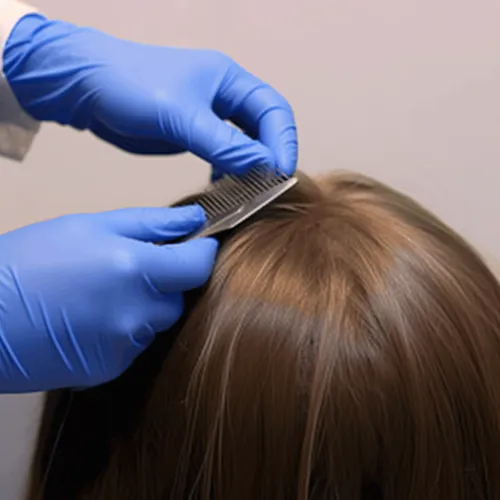What is Hair Drug Testing?
Hair drug testing is a method of screening for drug usage. A sample of a person’s hair is taken from their head or body and is dispatched to a laboratory for analysis in order to detect use of drugs of abuse.
What time period does hair testing cover?
Normally we will ask for a 40mm sample of hair for analysis. As human head hair grows on average at a rate of 13mm per month, this means that a typical drug hair test will cover a time period of around 90 days. This time frame is just an estimate as speed of hair growth can vary from individual to individual.
Does body hair give similar results to head hair?
Some donors may not have enough head hair to provide a sample for drug testing. In this case, body hair can be used instead. The time frame of drug usage represented by body hair is harder to ascertain than for head hair due to the high variability of body hair growth rates.
How soon after use can a drug be detected in hair?
Normally it will take 5-10 days for the hair to grow to a sufficient length above the scalp so that it can be collected and drug use identified.
Can environmental exposure to drugs (cannabis smoke, crack smoke, etc.) have an effect on the hair test results?
No. A wash procedure is used before the sample is analysed. Also, a hair drug test will look for the parent drug and its metabolite (bi-product). For cannabis analysis, only the metabolite is detected (THC-COOH). This metabolite cannot be picked up from smoke or other environmental factors as it is only produced by the body.
How can you beat a hair drug test?
You can’t cheat a drug test that uses hair. At the present time we know of no successful commercial adulterants that could affect hair drug test results. Use of normal hair care products (shampoos, hair dyes, bleach, etc) does not have any significant effect of hair drug test results.
Does hair colour effect hair drug test results?
The colour of your hair is determined by the amount of melanin it contains. Many, well documented studies have shown that hair colour does not have a significant effect on drug test results.
Can hair collected from a brush be used?
It can but the laboratory would have to identify the sample as having come from an anonymous donor, meaning that the sample could not be attributed to any one person and the time frame of drug usage could also not be stipulated.
Hair or Urine Drug Testing?
Hair and urine drug tests are the two most common methods used for employee drug screening. Each has its own advantages and disadvantages.
Detection window
One of the biggest differences between hair and urine testing is the window of detection. Urine tests can detect most drugs for 1-3 days after use, or up to around 30 days for regular marijuana use.
Hair testing provides a much longer detection window, covering approximately 90 days. This means hair testing is better able to identify long-term or habitual drug use. However, urine can detect very recent drug use that may be missed by hair testing.
Ease of cheating
It is relatively easy for people to tamper with their urine samples to try to pass a drug test. Dilution with water, adding chemicals, or substitution with clean urine can potentially help people pass a urine drug test.
Hair testing is very difficult to cheat. No current products can strip all traces of drugs from hair once use has occurred. Bleaching or dying hair does not significantly impact test results. As hair samples are harder to substitute or adulterate, hair testing may provide more definitive results.
Sample collection
Urine collection must be performed in a controlled environment to prevent tampering. Hair can be collected by employers themselves without supervision. This makes hair testing easier to coordinate logistically.
However, some individuals may feel urine testing is less invasive than providing a hair sample. Hair collection is simple and non-intrusive. But certain cultures or religions may object to hair being removed from the body.
Cost
Hair testing typically costs more per sample than urine testing. But when factoring in the costs of arranging for urine collection by a third party, the total costs for an employer may end up being comparable.
Drugs detected
Urine and hair are capable of detecting the same panel of illicit or prescription drugs. One key difference is that hair cannot accurately determine frequency of marijuana use, as urine can. But hair provides superior detection of habitual drug use over months rather than days.
Legal defensibility
Urine and hair testing are generally considered equally legally defensible for employment screening when performed to industry standards. Neither method is inherently better in terms of standing up to legal challenges.
Summary
For pre-employment screening, urine and hair drug tests both have their pros and cons. Overall, hair provides longer detection windows and is harder to adulterate. But urine can detect very recent drug use and frequency of cannabis exposure that hair may miss. Combining both methods offers the best of both worlds, but at increased total cost. For most employers, hair OR urine testing offer similar benefits and legal standing to make sound hiring decisions.
Photo by Anthony Cunningham for Zoom Testing
Zoom Testing is a leading UK drug testing company and a supplier of Drug Test Kits.
This post was originally published in January 2015 and has been updated since.





